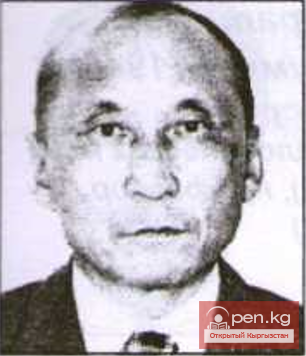
The process of "smoking" leather dishes (chanach yshtoo)
Leather from cattle, camels, and horses was used to make shoes, suede for saddlery, dishes, and more. The tanning of leather was carried out as follows: first, the hide was soaked in water, the hair was shaved off, then it was soaked for 3-4 days in ayran with alum, after which it was dried, cut into straps, and kneaded by hand.
In the "Manas," there are lines that provide recipes for making particularly durable leather. For this, the hide had to be fermented in copper vessels and kept there for 6 months; instead of ayran, malma was used (a mixture of sour whole milk, roots, and various herbs selected by color and quality, as well as the bark of wild yellow apple trees):
Not being lazy, Kanakei prepared the ferment with great diligence.
She placed the bark of apple trees in copper barrels.
She kept the malma for six months.
Having hunted fat wild goats,
After processing the skin in malma,
She made pants from the neck part.
From horse leather, primarily saba, vessels for preparing and storing kumis, as well as leather buckets were made. Chanach (Chanach is a wineskin made from the skin of a goat that has been removed and smoked) was made from goat leather. The leather dishes were kept for 20-25 days in yshtyk—a smoking pit, i.e., "smoked" for the purpose of disinfection and purification. The smoking pit was 1 meter deep and 3-4 meters in diameter. A pit for the stove was dug 1.5 meters away from it; smoke from the stove would enter the smoking pit through a chimney, where the leather dishes were hung on shelves. The yshtyk was made on the edge of a ravine, at the bottom of which water flowed. The top of the pit with the suspended leather dishes was carefully covered with various cloths to keep the smoke in the pit as long as possible. After a week of "smoking," all the leather dishes were turned over and placed back for a few more days of "smoking." Then the smoked dishes were removed from the yshtyk and smeared with tail fat.
After such treatment, due to the saturation of the leather with phenols from the smoke, it gained resistance to the action of putrefactive microorganisms.
In addition to dishes made from horse leather, the Kyrgyz made leather trunks, and from calf and foal leather—tulup—small bags in which various small items were kept.
Thus, the leather processed in such a primitive way met the modest needs of the Kyrgyz nomadic household.















































